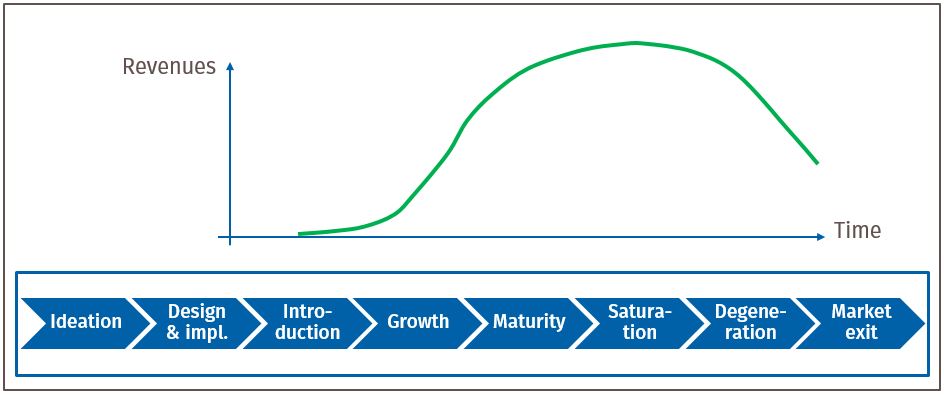 Think of an ordinary product. It doesn’t matter which one. Just look around. A cup of coffee, a computer mouse, your smartphone. Have you got one? Now close your eyes and become aware that exactly the product which is in your mind can tell you a long and interesting story. The story of its own life. Some time back a smart person had the initial idea for this very product. It should look like this and that, it should have this or that functionality, it could be sold for this or that price, customers could be convinced in this or that way to buy the product. The product which was nothing else than a faint idea by that time was already lucky. An open-minded manager allocated budget and resources and kicked-off the development of the product. The life of every product starts in a similar way. It has its birth date as an idea, advances from the idea to a concept and further on to a prototype. It is reviewed, scrutinized, tested, improved and revised until, finally, the initial product release is available and offered to customers. Already at this point, at the market introduction, the product has gone a long way which lasted probably a year or even more. Successful products have still a long way to go. Potential customers take notice of the product, more and more buy it. The price is reasonable, the quality is impeccable, it satisfies customer needs, it gets a positive image, the market window is wide open. The manufacturer is a winner with an impressive new success story. One day it reaches the peak of sold items and revenues. Afterwards, business gradually declines. Nothing to worry about. The product is mature. Customer complaints are an exception. Sales margin is excellent. The product is in „cash cow mode“. However, the end of the product’s life eventually approaches for its manufacturer. The market exit is the final stage in the product’s life cycle. Marketing and selling of our product is terminated. R&D resources are shifted to another product. Obligations are settled. The last accounting becomes approved. The books are closed. The product’s life is over and gets its place in the history of the manufacturer. Now open your eyes again. Back to reality. Let us consider the eight phases of the product life cycle together with a revenue graph over time: Picture 1: Product life cycle with revenues As you can see, the revenues turn up quite late. Which is obvious as we won’t have revenues before the product is available in the market. The earlier the better you might think. No, that’s not true. If a product is introduced too early in the market it is likely to do more harm than good. The product is not yet balanced. The quality is miserable because of too many bugs, performance is bad and a decent price is not justified. In short, it doesn’t meet customer expectations at all. Which is a disaster nowadays. Devastating testimonials are posted in portals and social media. The product gets a negative image as a heavy millstone around its neck which often is the beginning of a sudden end. The manufacturer is a loser in the marketplace just because of a single wrong decision. For recovering it requires excessive efforts to get back on track. Ask Microsoft for their experience with Windows 8. To get a product from the idea to market introduction is a huge challenge considering the complexity of functionality and technology within a fast changing market environment. Scheduling the market introduction such that the initial product offers an appropriate customer value and meets or even surpasses expectations is a masterpiece. You have to do many things right and can do everything wrong when launching a new product. Do it in a professional way and assign the responsibility for the product life cycle in general and the product introduction in particular to your Product Management. My recommendation: Consider the life cycle of your products and strive for a strong Product Management. RealSkills supports you with Product Management in-house training and consulting. What are your experiences and lessons learned with market introductions? I look forward to your feedback - ressenig@realskills.de |


